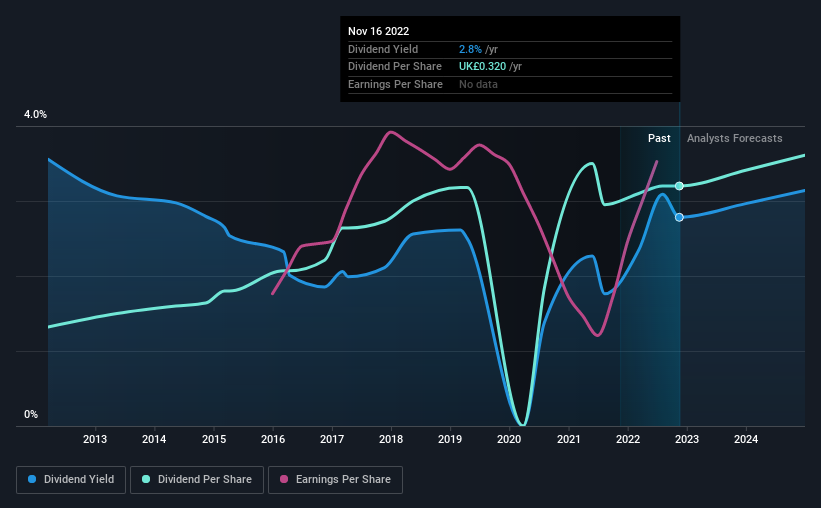Hill & Smith (LON:HILS) Is Increasing Its Dividend To £0.13
Hill & Smith PLC (LON:HILS) will increase its dividend from last year's comparable payment on the 6th of January to £0.13. Although the dividend is now higher, the yield is only 2.8%, which is below the industry average.
See our latest analysis for Hill & Smith
Hill & Smith's Payment Has Solid Earnings Coverage
The dividend yield is a little bit low, but sustainability of the payments is also an important part of evaluating an income stock. Prior to this announcement, Hill & Smith's dividend was only 52% of earnings, however it was paying out 112% of free cash flows. While the company may be more focused on returning cash to shareholders than growing the business at this time, we think that a cash payout ratio this high might expose the dividend to being cut if the business ran into some challenges.
The next year is set to see EPS grow by 32.9%. If the dividend continues along recent trends, we estimate the payout ratio will be 40%, which is in the range that makes us comfortable with the sustainability of the dividend.
Dividend Volatility
While the company has been paying a dividend for a long time, it has cut the dividend at least once in the last 10 years. The annual payment during the last 10 years was £0.132 in 2012, and the most recent fiscal year payment was £0.32. This means that it has been growing its distributions at 9.3% per annum over that time. It's good to see the dividend growing at a decent rate, but the dividend has been cut at least once in the past. Hill & Smith might have put its house in order since then, but we remain cautious.
Hill & Smith May Find It Hard To Grow The Dividend
Growing earnings per share could be a mitigating factor when considering the past fluctuations in the dividend. However, Hill & Smith's EPS was effectively flat over the past five years, which could stop the company from paying more every year. Growth of 1.0% per annum is not particularly high, which might explain why the company is paying out a higher proportion of earnings. This isn't bad in itself, but unless earnings growth pick up we wouldn't expect dividends to grow either.
In Summary
In summary, while it's always good to see the dividend being raised, we don't think Hill & Smith's payments are rock solid. While the low payout ratio is a redeeming feature, this is offset by the minimal cash to cover the payments. We would be a touch cautious of relying on this stock primarily for the dividend income.
It's important to note that companies having a consistent dividend policy will generate greater investor confidence than those having an erratic one. Still, investors need to consider a host of other factors, apart from dividend payments, when analysing a company. For instance, we've picked out 2 warning signs for Hill & Smith that investors should take into consideration. Is Hill & Smith not quite the opportunity you were looking for? Why not check out our selection of top dividend stocks.
Have feedback on this article? Concerned about the content? Get in touch with us directly. Alternatively, email editorial-team (at) simplywallst.com.
This article by Simply Wall St is general in nature. We provide commentary based on historical data and analyst forecasts only using an unbiased methodology and our articles are not intended to be financial advice. It does not constitute a recommendation to buy or sell any stock, and does not take account of your objectives, or your financial situation. We aim to bring you long-term focused analysis driven by fundamental data. Note that our analysis may not factor in the latest price-sensitive company announcements or qualitative material. Simply Wall St has no position in any stocks mentioned.
Join A Paid User Research Session
You’ll receive a US$30 Amazon Gift card for 1 hour of your time while helping us build better investing tools for the individual investors like yourself. Sign up here

 Yahoo Finance
Yahoo Finance 
